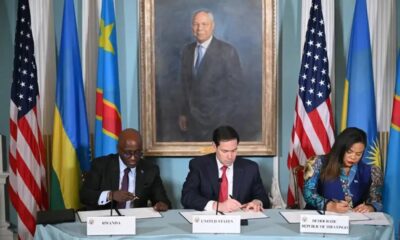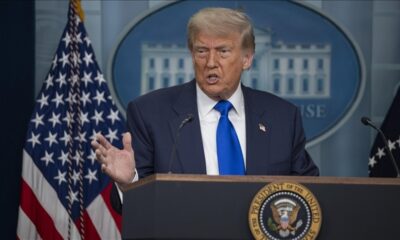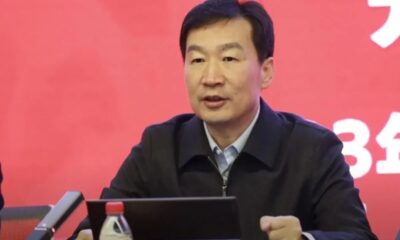Opinion
Behind Modi’s success and India’s future
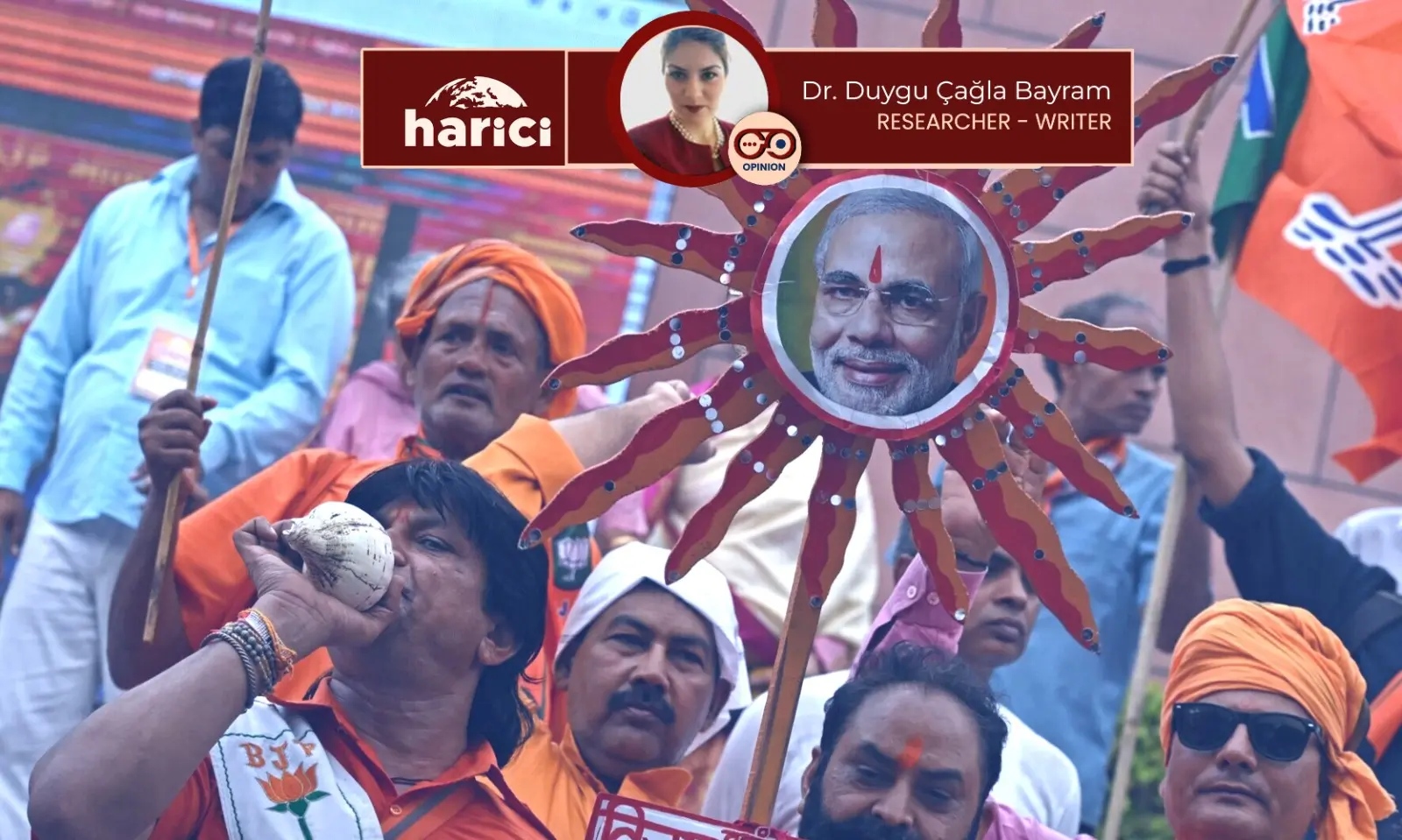
Dr. Duygu Çağla Bayram
For 44 days, India went to the polls in seven phases of general elections. Almost a billion people, more than a tenth of humanity, were eligible to vote. The result was beyond doubt. Modi won a third term, putting his name next to that of Jawaharlal Nehru, India’s independence leader and one of the architects of the secular India that Modi is rapidly trying to destroy. Nehru-Gandhi is fortunate to have a weak and dynastic opposition led by the Congress Party. He also has unrivalled propaganda skills. In no other country has its leader’s picture been printed on vaccination certificates, as Modi has done in India…
After the Bharatiya Janata Party (BJP) won India’s 2019 general election, its campaign slogan had also set a target: ‘ab ki baar, 300 paar’ (300 seats this time). It worked; the party and its allies won 353 of the 543 seats in the lower house of the national parliament, returning it to power and giving Narendra Modi a second term as prime minister. In the run-up to the 2024 elections, the BJP adopted almost the same slogan. But the bar was set at 400. It had only been crossed once before: In 1984, by the Congress, now the main opposition party. Could the BJP repeat the feat? Modi’s ambitious slogan ‘Ab ki baar, 400 paar’ for the NDA alliance, targeting more than 400 seats, may have backfired this time, raising fears of constitutional change with such a large majority. The unexpected revival of the Congress party, which has almost doubled its tally for 2019, underlines this shift.
India remains an amalgam of several states that even the most charismatic dictators find difficult to govern completely. As expected, there was no third Modi wave in these elections. Ten years ago, Modi led the BJP to India’s first parliamentary majority in three decades, and five years later, amid tensions with Pakistan, he turned that narrow majority into a more decisive one thanks to growing support. In the 2024 general election, which symbolised a return to pre-Modi India, Indian voters focused on local issues and leaders. In Andhra Pradesh, for example, where the BJP has few local party alliances, its ally Pawan Kalyan, a regional film star who has formed his own party and speaks Telugu, the state’s official language, received a more enthusiastic welcome. Or Maharashtra, which has grown much slower than the national average over the past decade and has overtaken Karnataka and Telangana in per capita income, focused on tough issues such as suicides among indebted farmers; the feeling was that Maharashtra was in decline because Modi had favoured the development of neighbouring Gujarat, his home state. Maharashtra’s disappointment was significant because it has more seats in parliament than any other state except Uttar Pradesh, the heartland of the Hindi belt.
In short, while the urban middle class was generally proud of Modi’s basic narrative for a third term – that a booming economy had boosted India’s global standing – most rural voters were not, still citing daily hardships caused by rising food prices and the urgent need for more government aid.
But in mid-March, India’s Home Minister – and Modi’s close friend – Amit Shah, travelled to Gujarat to launch his re-election campaign, and in a speech to a crowd of BJP workers, argued that the BJP had both improved the lot of ordinary Indians and raised India’s standing in the world, saying that only the BJP could ensure that a ‘small party worker’ like himself and a ‘tea vendor from a poor family’ like Modi were the most powerful men in the country, and that only Modi could make India safe and prosperous.
Foreign policy
Priority foreign policy objectives are to lead the Global South, act as South Asia’s ‘first responder’ and obtain the elusive permanent seat on the UN Security Council. Establishing IMEC, SAGAR, Neighbourhood First policy, mine safety, diaspora, bringing back Bharatiya artefacts, promoting Lord Ram’s legacy are other priority foreign policy objectives. But leadership of the global south is the primary objective. It is clear that India wants to strengthen its position as the voice of the Global South BUT everyone wants to be the leader of the Global South and the question is how to make it a reality…
There was not much talk of regional security during the campaign, just a promise to focus on the Indian Ocean. And the focus on national security was ‘terrorism and naxalism’, not China. And there was not much mention of India’s biggest external challenge, which is China. There was no mention of China, but there was also no mention of America, which is India’s main strategic partner. So the campaign was more about economy – development – welfare – and, of course, Hindu nationalism – than it was about foreign or security policy. But they did seem to focus on multilateralism and soft power issues. At this point, we can expect strong South-South cooperation between India, Brazil and South Africa, also known as IBSA, which will play an important role as the G-20 troika this year.
Domestic policy
Acceleration of infrastructure development along the borders with China, Myanmar and Pakistan, making India the third largest economy, implementation of the Citizenship Amendment Act, implementation of the Uniform Civil Code, implementation of One Nation, One Election, free ration cards for 800 million citizens for five years, free electricity for poor households, The creation of infrastructure such as women’s hostels and crèches near industrial and commercial centres to encourage women’s participation in the labour force, the expansion of health services to ensure that women lead healthy lives, access to free and quality health care for senior citizens, continued financial support for farmers and the inclusion of car, taxi, truck and other drivers in all social security programmes are among the important promises made.
The Jekyll and Hyde journey continues…
In India, Modi’s quest for communalism, i.e. the transformation of India from a secular nation into an openly Hindu one, and for the Thatcherite medicine needed to modernise the Indian economy will continue. In his third term, Modi could therefore continue to strengthen Hindu nationalism while accelerating economic reforms. For India’s 200 million Muslims and the country’s various NGOs, academics and secular advocates in the media, life is harder than it was a decade ago and is likely to get harder. India is becoming an elective autocracy. But Modi is also a highly effective project manager. The country’s highways and airports are new and modern (although there are allegations that some highway tenders were not awarded to a single contractor, but were broken up into one-mile segments and awarded to smaller contractors…). Each kilometre of road is of a different quality and level. And note the allegations of some Indians who believe that this was done to win political votes for the BJP, but at the expense of the country’s second-rate infrastructure).
India has seen an increase in internet usage, an increase in air travel, 420 million more bank accounts, 110 million more gas connections, 220 million more insured, an increase in the rate of highway construction, more taxpayers and more taxes paid, the export of anti-covid vaccines to many countries, India’s global prestige has increased, and of course free rations for 800 million people…
India has overtaken China as the fastest growing major country in the world. It has also recently overtaken the UK to become the world’s fifth largest economy and China’s most populous. (It should be noted, however, that Modi is the inheritor, not the inventor, of India’s economic growth momentum). Part of what makes Modi so popular is the sense among ordinary voters and elites that he will bring prosperity to India: India is, after all, the world’s fastest-growing major economy and is expected to become the third-largest by 2027.
Indians are better off than they were ten years ago. There is a sense of pride and belief in a better future, while recognising that there are things that can be done differently, especially with regard to minorities. Further reforms are expected to take India to even greater heights in the period ahead. But while poverty is falling, unemployment remains high (around 8 per cent, the highest rate in 40 years). Every young person who can find the money tries to go to Canada, the United Arab Emirates, Australia or countries like Italy. And the poor are still very poor. Yes, the middle class is growing, the rich are getting richer. But the bottom 40 per cent live in abject poverty. Perhaps it is a Western obsession to compare the GDP of a country with 1.40 billion people with that of the UK with 70 million. The UK’s GDP does not reflect the plight of the bottom 40 per cent. Three-quarters of Indians have no social security, no national health security, no insurance, no travel abroad. Pollution is rife. There is little hygiene. Only 5 per cent of Indians own more than 60 per cent of the country’s wealth, while the bottom 50 per cent of the population own just 3 per cent of it,’ says the Oxfam India report.
On the other hand, the space for dissent in India is shrinking. The courts are mostly compliant and docile. At the administrative level, the autonomy of constitutional institutions has suffered a setback as most governments do Modi’s bidding. The richest names in business, notably Gautam Adani and Mukesh Ambani, work hand in hand with the ruling party. Corporate taxes are falling and regulatory privileges are being handed out to loyal businessmen. But a strategy to rebuild a pluralistic society along religious majoritarian lines is running into trouble.
A 2023 report by the US Commission on International Religious Freedom said: ‘During the year, the Indian government promoted and implemented religiously discriminatory policies at the national, state, and local levels, including laws targeting conversion, interfaith relations, the wearing of the hijab, and cow slaughter that adversely affect Muslims, Christians, Sikhs, Dalits, and Adivasis (indigenous peoples and scheduled tribes). Human Rights Watch summarised the situation of Muslim minorities in India as follows Indian authorities have adopted laws and policies that systematically discriminate against Muslims and stigmatise critics of the government.
The third term is also a mandate to intensify the Hindutva project. This is likely to further deprive India of the culture of polyphonic dissent and tolerance that was the hallmark of the post-independence years. There are already rumblings within the country that the last decade of BJP rule has been a fragment, with more to come… Whatever the word…
Will India become a Hindu society and a dictatorship? No, Indians will find a way to prevent that.
In conclusion, the value of education and scientific research is declining in India, as faith-based knowledge takes precedence over rational thought. I have heard Modi claim that in the past there were plastic surgeons in India who could implant an elephant’s head on a human being, or that planes could not be detected by radar because of clouds, and what is worse, I have heard that there are those who believe all this without hesitation…
Opinion
A new peace or an old exploitation? A closer look at the Rwanda-Congo agreement

Barış Karaağaç, Faculty Member at Trent University
Peace, you say?
On June 27, 2025, a peace agreement was signed in Washington between the Democratic Republic of Congo (DRC) and Rwanda. Mediated by the United States and Qatar, this signing ceremony was presented, at first glance, as a promising development for the region. But a closer look reveals a much more complex picture.
The symbolic photo circulated from the agreement is thought-provoking: U.S. Secretary of State Marco Rubio stands between the foreign ministers of Rwanda and Congo as they shake hands. Behind them looms a giant portrait of Colin Powell. Signing a peace treaty under the shadow of Powell, one of the architects of the 2003 invasion and plunder of Iraq, is surely the height of historical irony.
In this article, let’s look behind the curtain of this peace agreement: Is peace truly on its way, or are other agendas at play? Let’s try to understand together what both the Congolese people and the great powers stand to gain or lose from this deal.
Background: Minerals, refugees, and the shadow of M23
This agreement came at a time when the rebel group known as M23 had captured strategic cities in eastern Congo, displaced hundreds of thousands of people, and seized control of rich mineral deposits. There are serious allegations that Rwanda is behind M23. The Kigali government, however, denies these accusations and, in turn, demands the neutralization of the FDLR, a Hutu militia group in Congo.
But the roots of these conflicts lie much deeper. Approximately 800,000 people were killed in the 1994 Rwandan Genocide. The privileges granted to the Tutsis by Belgium during the colonial era had, over the years, unleashed the pent-up rage of the Hutu majority. In the aftermath of the genocide, thousands of Hutus, along with armed groups, fled to the neighboring country of Zaire (today’s Democratic Republic of Congo). This further inflamed ethnic tensions in the region.
For years, eastern Congo has been ravaged by wars fought not only over people but also over precious minerals like gold, cobalt, and coltan.
Official rhetoric: Praise for peace, questions between the lines
Official statements are dominated by an atmosphere of peace. Rwanda’s state newspaper, The New Times, described the agreement as a “historic opportunity,” while the Chairperson of the African Union Commission, Mahamoud Ali Youssouf, hailed the development as a “milestone for regional peace.”
The DRC’s Minister of Foreign Affairs, Thérèse Kayikwamba Wagner, stated, “Our real work begins now,” emphasizing that peace is possible not just with a signature, but with justice, the return of refugees, and the true silencing of guns.
However, Congo’s independent newspapers are approaching this process more cautiously. Kinshasa-based publications like Le Potentiel, L’Avenir, and Le Soft International are known for their independent stance from the official government line and for listening to the voices of social opposition. These outlets point out that the agreement’s implementation depends on domestic political will, foreign interference, and the actual conditions on the ground. Their writings expose the chasm between the peace on paper and the reality on the ground.
Through a critical lens: Mining disguised as peace
Now, let’s get to the heart of the matter: Congo is the world’s largest producer of cobalt. Nearly every mineral of strategic importance—coltan, gold, copper, lithium—can be found in this country. Numerous sectors, from electric vehicles to the defense industry, are dependent on these minerals.
U.S. President Donald Trump spoke quite openly after the signing: “We are getting a lot of mineral rights from Congo. This is a huge win for us.”
Around the same time, a Newsweek report explicitly stated that the U.S. agreement with the region was aimed at breaking China’s influence over rare earth metals. China should not be forgotten in this picture. Over the last decade, China has made massive investments in Africa. With its “infrastructure for resources” model, it has built roads, railways, and dams. Now, the U.S. wants to counterbalance China’s influence in the region and create space for its own companies. In short, on one side are the minerals, and on the other is the arm-wrestling of superpowers.
In this context, “peace” also comes to mean a new investment opportunity. Many thinkers on the international left interpret such processes as a “capitalist maneuver packaged as peace.” Development, stability, foreign aid… behind these flowery concepts operates a model where multinational corporations lay claim to the mines.
Congo, for its part, offered the U.S. “resources in exchange for security.” This hardly seems like a “partnership of equals.”
Moreover, the person leading the diplomatic process is Massad Boulos, an advisor to President Trump and also his daughter’s father-in-law. This makes the peace process look like both a family affair and a foreign trade deal. U.S. diplomacy, this time, seems to be operating like a family business.
Conclusion: A peace ‘Made in Congo’?
For over a century, the Democratic Republic of Congo has been at the center of colonialism, wars, and international power plays. Now there is a peace agreement, but whether it will benefit the people or the corporations remains debatable.
True peace comes—and should come—not just with the silencing of guns, but with the fair distribution of resources, accountable governance, and the right of peoples to self-determination. Otherwise, a new system of exploitation will simply be given the name “peace.”
Who knows, maybe one day electric bicycles with a “Made in Congo” label will appear on the world market. But as it stands today, this peace seems to bear the stamp “Made for US Corporations.”
Opinion
From the Six-Day War to the ‘Twelve-Day War’
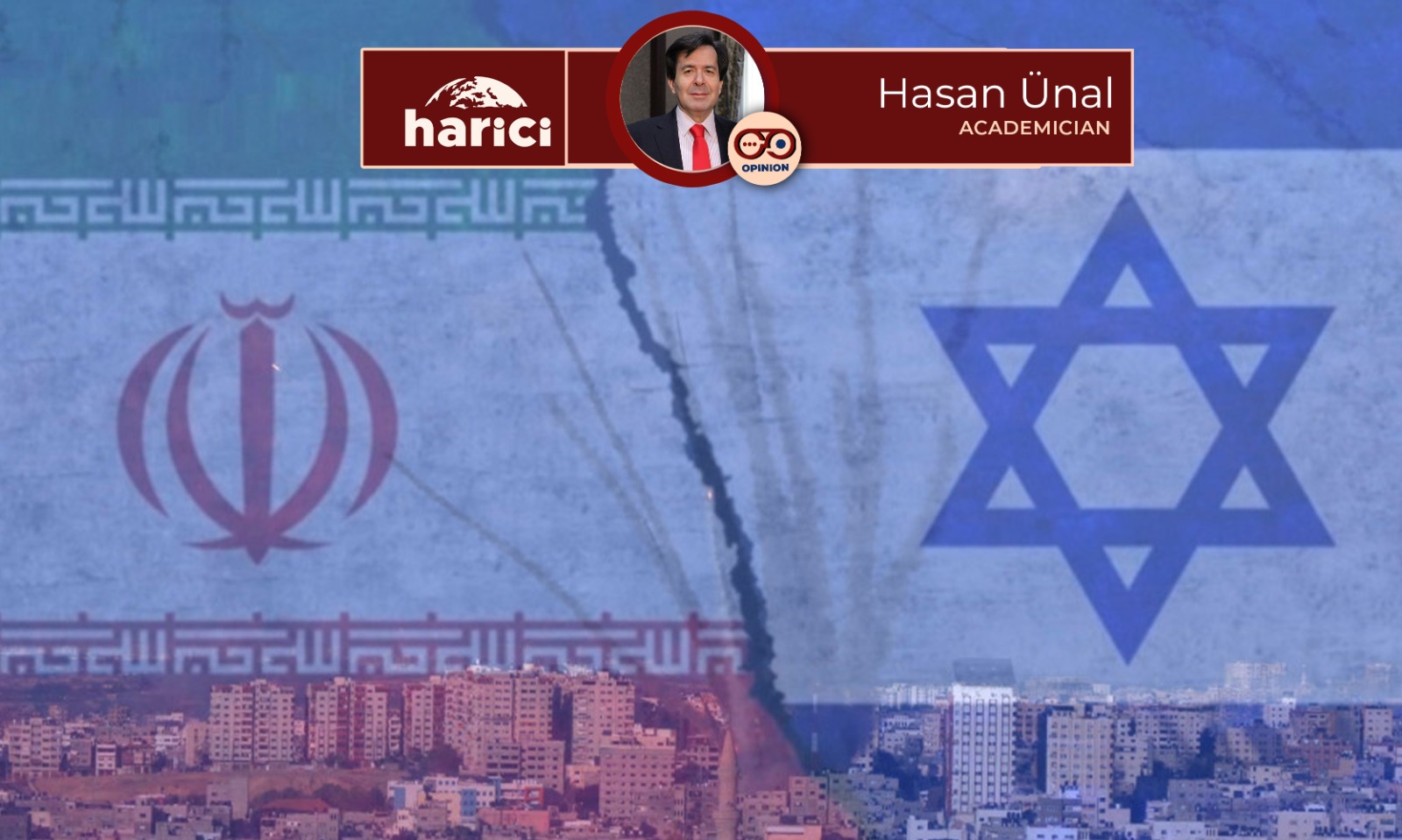
The first round of the Iran-Israel conflict/war has likely concluded. This round, which consisted of mutual air strikes and missile salvos, will go down in the recent history of the Middle East as the Twelve-Day War. In the past, there was the Six-Day War; on June 5, 1967, Israel attacked Egypt first, followed by Syria and Jordan in the succeeding days, inflicting a crushing defeat on three Arab states in six days and quadrupling its territory.
Israel had previously fought these three states in 1948, immediately after its declaration of independence. In that war, it dealt a serious defeat to Egypt and Syria but was defeated by Jordan. Jordanian forces, largely trained and commanded by British officers, had ‘occupied’ the areas of what are today the West Bank and East Jerusalem. When Israel attacked its Arab neighbors in June 1967, it once again inflicted a devastating defeat on the two states it had beaten in the 1948 war, occupying Egypt’s Sinai Peninsula and Syria’s Golan region. It also defeated Jordan, annexing East Jerusalem and the West Bank, thereby roughly quadrupling its own territory. And because it managed to do all this in six days, these conflicts went down in history as the Six-Day War.
This defeat was not only devastating and humiliating for the warring Arab states and the Arab world in general, but it also brought about the end of the legendary Egyptian leader Nasser. Following his death from a sudden heart attack three years later (1970), it marked the end of the Pan-Arabism ideology not just in Egypt but across the entire Arab world. When the Arab states of Egypt and Syria responded to this defeat in 1973 with what was perhaps their first synchronized and well-planned attack (the Yom Kippur War, October 7, 1973), they managed to reclaim all the territory Israel had occupied in the Six-Day War on the very first day. However, thanks to the most extensive arms and ammunition airlift in history, conducted by the United States with large military transport planes flying directly to the front lines, Israel managed to turn the tide of the war and bring it to a close at its starting point. A similar airlift by the Soviet Union to the Arab countries saved Egypt’s encircled Third Army in the Sinai Peninsula from annihilation, but it was not enough for them to regain the military successes of the initial days.
Israel has not fought a war with any state since 1973
The Yom Kippur War would also be a turning point in the Arab-Israeli conflict. The policy initiated by Egyptian leader Anwar Sadat just before the war—of rapidly distancing from the Soviet Union and moving closer to the US—paid off for Cairo. Through the US-mediated peace process (Camp David), Egypt largely recovered the territories it had lost in the 1967 war, briefly regained in the early days of the 1973 war, and then lost again as the war turned in Israel’s favor. However, when this process, which began with recognizing Israel’s right to exist in the Middle East, progressed to the appointment of ambassadors between the two countries and the signing of the Camp David Accords, Egypt would be expelled from the Arab League at the initiative of Arab nations led by Syria, Iraq, and Libya.
The subsequent years were not at all positive for the Arab states and Palestinians who favored continuing the struggle against Israel to the end. The unipolar world order that emerged under American leadership after the collapse of the Soviet Union opened every window of opportunity for Israel. Eventually, the Iraqi and Libyan regimes that opposed reconciliation with Israel were overthrown, and their leaders (Saddam Hussein and Muammar Gaddafi) were killed. Syria, destabilized by our [Türkiye’s] own misguided policies, was added to this chain of events (2011-2024). Meanwhile, the Oslo Peace Process, initiated in the early 1990s, was sabotaged by extremist parties and the political elite in Israel.
During this period, while Israel tormented Palestinians and the groups in Southern Lebanon that would become Hezbollah for years, the instability and popular discontent in Iraq helped Iran gain tremendous strategic depth in that country and in Syria. Thus began the emergence of the forces known as the Axis of Resistance. The Hamas, Hezbollah, Hashd al-Shaabi [Popular Mobilization Forces], and Yemen’s Ansar Allah movements either began or developed during this period. The Syrian state seemed to act as a bridge connecting the Axis of Resistance, from Iran to Hezbollah and even to Hamas.
It would be appropriate to view Israel’s June 13 attack on Iran as a continuation of the series of wars it launched in response to Hamas’s attacks on October 7, 2023, waged first against Hamas in Gaza, which a majority of global expert opinion has deemed a ‘genocide’. Perhaps the most significant development that paved the way for Israel, which had been unable to achieve sufficient success against Hezbollah, was the completely unexpected fall of the Syrian regime in December 2024 and former President Bashar al-Assad’s flight to Moscow.
Israel engaged in war with a state actor for the first time since 1973
Israel’s air operation against Iran, launched on June 13, is its first conflict with a state actor since the three-week war against Egypt and Syria in 1973. Moreover, this cannot be considered a full-scale war, as the land and naval forces of these two states, separated by approximately two thousand kilometers of land borders, did not participate in the clashes, and their special forces did not conduct operations against each other.
Israel’s air strikes on Iran were launched simultaneously with assassination operations by opposition/espionage elements it had cultivated within Iran, killing high-level civilian/military officials in Tehran. In this respect, Israel’s attack must have achieved the effect of a complete surprise raid. However, it is also clear that this should not be exaggerated. Indeed, the Iranian administration made new appointments within hours and began its first missile attacks on Israel that same evening. No Western air defense system could fully stop Iran’s missile attacks, which were carried out with increasing intensity; the legendary air defense system known as the Iron Dome was largely ineffective. In contrast, the Israeli air force’s strikes had only a limited impact. The limited involvement of the US in the war did not significantly damage Iran’s missile launch capabilities, and ultimately, the parties—likely Israel—requested or agreed to a ceasefire.
The results of the Twelve-Day War
In these clashes, Iran’s subjection of Israeli territory to intense missile fire is an extraordinary achievement; since its establishment in 1948, Israeli residential areas had never been comprehensively bombed by any state. In the 1948-49 war that began immediately after its declaration of independence, Israel fought against three Arab states (Egypt, Syria, Jordan). In contrast, in the Six-Day War, it launched a surprise attack on these three states, inflicting a disastrous defeat on all of them. In the 1973 War, it was the one surprised, but in none of these conflicts were its territories and residential areas subjected to any significant air raids by the air forces of the countries it fought.
However, in the last two of these wars—air forces were not widely used in the first—Israel had subjected the major centers of Egypt, Syria, and Jordan, including their capitals, to intense aerial bombardment. While Israel’s superiority in air power was clear in the conflict with Iran, Iran’s undisputed superiority in missiles turned every inch of Israeli territory into a target. The effect this will have on the Israeli public in the short and medium term must be taken seriously. For Israeli citizens, a large majority of whom hold dual passports, the government’s refusal to allow them to leave the country for security reasons during the conflict strengthens this thesis.
The first question after the conflict concerns whether this ceasefire will be permanent. Although Israel has largely adhered to ceasefire processes signed after wars with states, it has not behaved the same way toward actors like Hamas and similar groups—with Hezbollah being a partial exception. How it will act towards a state actor like Iran remains a significant question. On the other hand, even if the ceasefire holds, it would be overly optimistic to think that Israel and the United States have abandoned the idea of regime change.
It is not easy to predict at this moment how Iran’s gaining of considerable sympathy in world public opinion and Israel’s image as a country continuing its aggression after the Gaza genocide will concretely reflect on the field of struggle. In this period, where the limits of what Trump can do for Israel have become clear, it does not appear to be a strong possibility that Israel will change its foreign and security policies by accepting multipolarity as a given.
In this case, one can assume with certainty that Iran will try to fill its gaps by acquiring air defense systems from Russia and advanced fighter jets from China, while Israel, as always, will prepare for the next round with all the systems developed by the American arms industry. It is also among the possibilities that Iran could establish a strong deterrence, dissuading Israel and America from this course. There is no doubt that there are many lessons for Türkiye to draw from this war. Foremost among them would be for Ankara to understand how wrong its Syria policies were, which completely paved the way for Israel, and to act accordingly. The lessons for Türkiye are not the subject of this article and will be addressed in other analyses, so we will leave it at that for now…
Prof. Dr. Hasan Ünal
Başkent University
Department of Political Science and International Relations
Opinion
A Controllable Conflict with No Winners
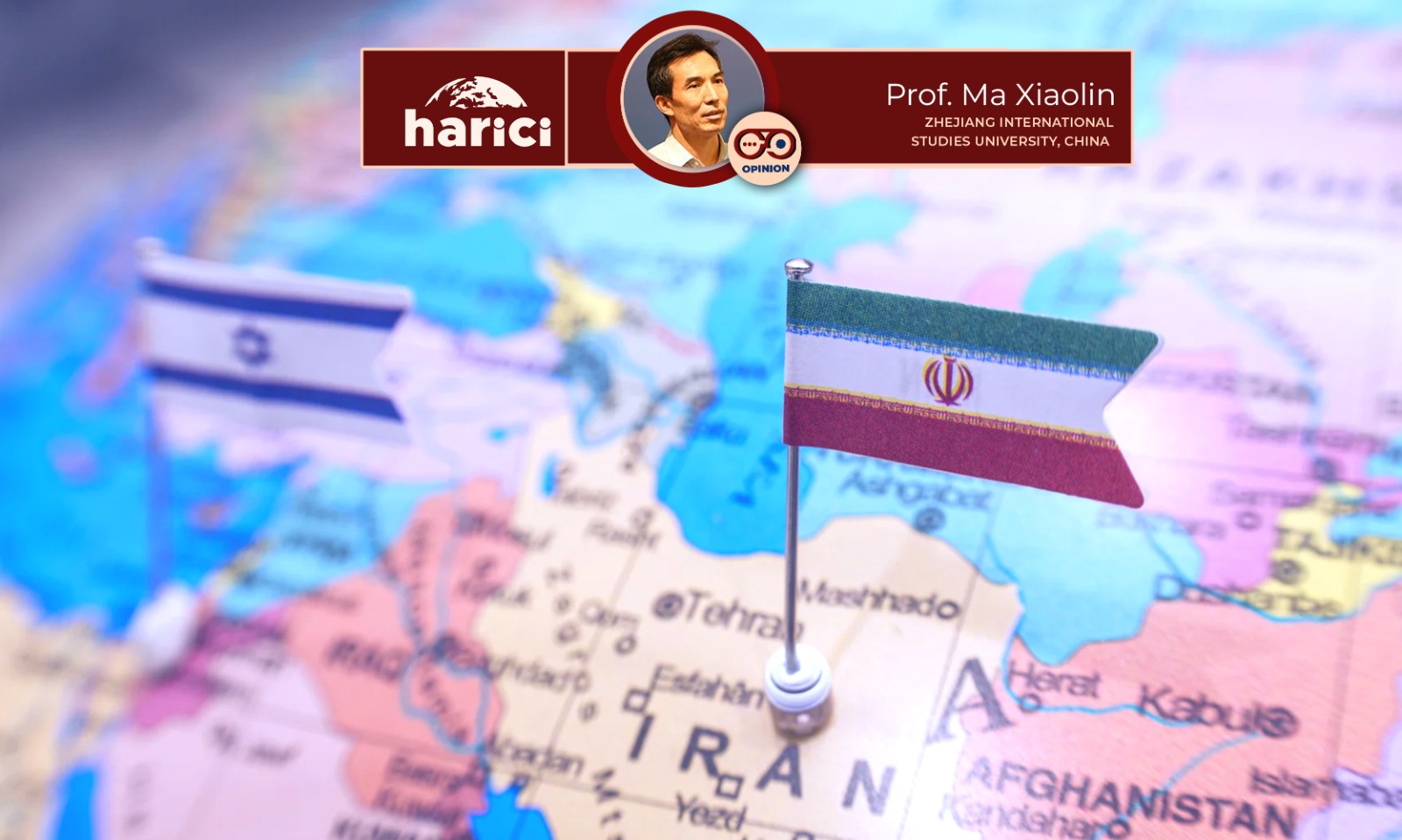
From June 13 to 24, an unprecedented large-scale offensive confrontation took place between Israel and Iran. During this period, the United States directly joined the conflict in support of Israel, launching long-range bombings on three major Iranian nuclear facilities, prompting a symbolic retaliatory response from Iran. Ultimately, under direct U.S. mediation, the conflict transitioned into a ceasefire, with all three parties claiming “victory.” From a joint U.S.-Israeli assault on Iran to a rapid ceasefire just 12 days later, this was a conflict with no winners—a calculated, limited clash filled with theatrical displays that failed to address the fundamental contradictions, and thus risks reigniting at any moment.
There were no winners in this conflict. Israel, Iran, and the United States all paid varying costs at different levels, with far-reaching consequences. Of course, there were clear losers—the people of Israel and Iran caught in the fire, the ever-scarce willingness for reconciliation and strategic mutual trust between Iran, Israel, and the United States, and the reputation of the U.S., which again played both referee and player.
Israel, leveraging its powerful long-range strike capabilities and intelligence networks, adhered to its military tradition of “preemptive strikes” and repelling threats beyond its borders. Under the codename “Lion’s Rise,” it conducted targeted bombings on select Iranian nuclear facilities, government institutions, missile and air force bases. With the help of undercover agents, over 20 senior Iranian military officers and more than 10 nuclear scientists were physically eliminated.
As a “micro-state” in terms of population, land, and resources, Israel dared to proactively challenge Iran—a Middle Eastern power ten times its size in all three aspects. This showcased Israel’s strong national will, sophisticated military strategy, and supreme air dominance. Notably, Israeli air forces operated flamboyantly over Tehran for two hours, even performing aerial refueling. Israeli intelligence’s deep infiltration, information acquisition, local recruitment, and surprise attacks on Iranian soil created a modern myth of both overt and covert warfare.
However, Israel still emerged a loser. In terms of morality and international opinion, Israel once again blatantly trampled on the UN Charter and international law, violating Iran’s sovereignty, airspace, and territorial integrity under the pretext of Iran’s nuclear ambitions. Moreover, Israel used the airspace of Arab countries between it and Iran as if it were its own, turning them into war corridors and violating the sovereignty, airspace, and dignity of these innocent neighbors.
Israel’s undeclared war and surprise attack on Iran—including direct “decapitation” of military leaders and continued assassinations of nuclear scientists—constitute typical acts of state terrorism. Ending the lives of foreign military personnel and civilians without formal charges, defense, or verdicts gravely undermines modern civilization, the rule of law, and humanitarian values, further damaging Israel’s already distorted and negative international image—perhaps even to the point of disgust.
Israel’s blitz on Iran triggered a fierce counterstrike dubbed “Sincere Promise-3.” In just 12 days, Iran launched 22 rounds of long-range airstrikes against Israeli territory, firing at least 534 medium-range missiles and deploying waves of drones. It also achieved a breakthrough in controlling Israeli airspace via missile attacks.
Despite U.S. assistance in joint defense, Israel’s so-called ironclad multilayered long-range interception system was heavily breached. Major cities like Tel Aviv, Haifa, Beersheba, and Eilat endured war-grade bombings for the first time. Key departments, energy facilities, and economic hubs were either destroyed or seriously damaged. For the first time in over half a century, Israeli citizens experienced the horror of “hellfire” raining from the skies, plunging the nation into unprecedented panic.
Israel’s strong offense and weak defense created an imbalance that was not just tactical but a strategic and psychological defeat. This marked the second time in two years that the myth of Israel’s military invincibility was shattered. On October 7, 2023, Israel’s security defenses were unexpectedly breached by Hamas, catching its military off guard and causing heavy civilian casualties. This time, despite meticulous planning and preemptive strikes, its narrow airspace—though protected by the world’s most advanced defense systems—was still riddled by Iran’s far stronger retaliatory “rain of missiles.” The lasting political, social, and psychological trauma of this 12-day conflict on Israel and its people remains to be seen.
Iran was not a winner either. Although Iran was the victim of aggression and earned some international sympathy, and even fought Israel to a military stalemate while achieving a historic breakthrough in striking deep into Israeli territory—something Arab countries had failed to do for half a century—it still fell short in other areas. As a regional power long seeking superpower status, the undisputed leader of the “Shia Crescent” in the Middle East, the cornerstone of the “Axis of Resistance,” and a stronghold against U.S. and Israeli dominance, Iran suffered a disastrous and humiliating initial phase of the war. Despite effectively retaliating against Israeli core cities from afar, it failed to defend its own airspace, critical facilities, military leadership, and nuclear scientists at close range. Authorities fixated on inspecting women’s clothing for compliance while neglecting the detection of thousands of embedded Israeli spies and agents.
From a long-term shadow war and espionage campaign with almost no victories, to the mysterious crash of President Raisi’s plane in 2024, and now to a defenseless state with unprotected security—enemy aircraft roam unimpeded, spies and traitors emerge endlessly and act at will—Iran resembles the Philistine giant Goliath from legend, ambushed and beheaded by a heroic Jewish king: large but hollow, big but not strong.
Faced with Israel’s blitz, Iran’s key figures are unable to protect their lives, critical facilities are left exposed to bombing, Tehran becomes a ghost town, and national defense reveals gaping holes. Especially astonishing are the weakness of Iran’s air defense and its security systems.
This is the first time in 37 years since the end of the Iran–Iraq War in 1988 that Iran has suffered large-scale, sustained airstrikes by a foreign adversary. The memory of two generations of peace and security has thus ended, and the country now faces the risk of nuclear leakage and contamination.
During the Iran–Iraq War, Iran was nearly isolated and unsupported. Yet now, under a combined Israeli-American assault, Iran is still left in “glorious solitude.” Surrounding Arab and Islamic countries merely watch from the sidelines. The so-called “Axis of Resistance” offers only verbal support via Yemen’s Houthi forces. Western governments neither imposed embargoes on Israel nor suspended supplies. German Chancellor Merz even publicly praised and thanked Israel for “doing the dirty work for everyone.” The NATO summit didn’t mention the Israeli-American attack on Iran at all. Instead, it accused Iran of supplying military equipment to Russia…
Iran suffered unprecedented airstrikes and bombings: more than 600 dead, nearly 5,000 injured, and painstakingly developed nuclear facilities widely damaged.
However, the repeated humiliation of Iran’s national and ethnic dignity doesn’t stem entirely from Israel’s or America’s overwhelming military or technological advantage. Rather, it’s due to Iran’s own government’s game-like, performative, even transactional military responses and diplomatic bargaining.
This kind of interaction model has created a new framework of mutual damage control between warring states—but it also renders the sacrifices made by the Iranian people over the past 40 years for the regime utterly meaningless.
The U.S. deployed strategic bombers in the “Midnight Hammer” operation to clean up the aftermath of Israel’s attack on Iran’s nuclear facilities. But it first notified the Iranian government, allowing them to take emergency measures to avoid or minimize losses.
When Iran struck back by attacking a U.S. military base in Qatar, it likewise informed the U.S. beforehand, turning what could have been a legitimate act of revenge into a staged military-diplomatic performance—and earning public thanks from President Trump.
Of course, turning geopolitics into a damage-control game didn’t begin now. It started in 2021 with the U.S. assassination of Quds Force Commander Qasem Soleimani in Iraq, followed by Iran’s symbolic retaliation. It continued with the two symbolic tit-for-tat strikes between Iran and Israel in April and October 2024—especially with Iran’s habit of pre-informing adversaries, delaying attack times, and trying to avoid provoking further escalation.
Matters of national sovereignty, questions of war and peace, enmity and alliance—these are solemn and serious issues, closely tied to the people’s safety and emotions.
Iran’s long-standing love-hate flirtation with the “Great and Little Satans” it curses so often, and its behind-the-scenes coordination, makes the outside world feel that the happiness of several generations of Iranians sacrificed for exporting the Islamic Revolution is utterly worthless.
The fact that Iran was able to uncover so many Israeli spies perhaps also indirectly proves that the regime, the system, and the chosen path of the country are increasingly losing their centripetal force and cohesion—or in other words, the state and the regime are beginning to split.
The United States didn’t win either. Trump boasted about his “timely intervention” and claimed victory through the bombing of Iran’s nuclear facilities. Some U.S. lawmakers even sycophantically nominated him for the Nobel Peace Prize. But America gained little and lost much.
As a superpower, the U.S. used five rounds of nuclear negotiations as a cover, employed strategic deception to support Israel’s surprise attack, and claimed it would decide on military action within two weeks—only to seize the opportunity and strike Iran while it was vulnerable, using surgical strikes.
Its political integrity, national ethics, and international credibility have all collapsed.
As the only country to have ever used nuclear weapons in combat—causing hundreds of thousands of civilian deaths—and as a founding member of the Nuclear Non-Proliferation Treaty (NPT), the U.S., by bombing Iran’s nuclear facilities, has now led the way in undermining that very treaty.
President Trump, who claims to hate war, bombed Syrian government targets early in his first term and provoked armed clashes with Iran in the Persian Gulf before leaving office. Not even halfway through his second term, he has already deployed strategic bombers and bunker busters against Iranian nuclear sites…
With such an unreliable president in charge, what “virtue” or “credibility” does America even have left?
The United States claimed to have destroyed Iran’s three major nuclear facilities. However, intelligence agencies from both the U.S. and Israel denied this, judging that it only delayed Iran’s restoration of nuclear capabilities by several months or years.
By conspiring with Israel and jointly attacking Iran, the U.S. broke its promises, intensified Iran’s strategic doubts and anxieties, and may have inadvertently pushed Iran to abandon its strategic hesitation and truly embark on the path of nuclear armament for self-preservation.
This conflict is a phase of the “Sixth Middle East War” that began on October 7, 2023, and is also a contest between state actors with the highest levels of equipment and tactics.
Since Islamists, Iran, and the U.S. all did not want the conflict to escalate into a fully uncontrollable situation, and had all preset boundaries and objectives, the conflict showed high intensity but remained controllable.
Of course, the ceasefire does not mean the war has completely ended, because none of the three parties fully achieved their goals.
Israel seeks to completely destroy Iran’s nuclear capabilities and long-range missile systems, and preferably trigger domestic chaos or even regime change in Iran, thereby fundamentally ending Iran’s hostile policies.
Therefore, it focused on striking and eliminating Iran’s nuclear infrastructure, strategic weapons, military leaders, and scientific research personnel, while also trying to create panic to stir up public discontent and provoke a color revolution. But these goals were only partially achieved.
The United States hoped to dismantle Iran’s nuclear program through cooperation with Israel, and force Iran to sign a new agreement renouncing its regional expansion policy. However, it also feared being drawn into another quagmire of war.
Thus, it initially played the role of support aircraft and logistics provider for Israel’s war machine, and once Israel had secured control of Iranian airspace, the U.S. joined in personally to carry out deeper strikes and targeted removals of nuclear facilities—while also informing Iran in advance to prevent misjudgment.
Iran tried to pursue equal nuclear rights, assert its status as a major regional power, and raise the banner of the “Axis of Resistance.”
At the same time, it sought to avoid excessive bloodshed and especially avoid direct war with the U.S.
Therefore, after responding proportionally to Israel and symbolically retaliating against the U.S., Iran actively sought and accepted a ceasefire to prevent escalation of war that could eventually affect domestic stability and regime legitimacy.
At present, Israel has doubled its military operational range, expanding from the Eastern Mediterranean to the Iranian plateau.
However, due to its small population, narrow territory, and scarce resources, it is not well suited for a prolonged war of attrition, and must coordinate with the U.S.—which presents its own strategic limitations.
The United States, strategically reducing its footprint in the Middle East, aims to maintain regional control at minimal cost.
Thus, it must rely on its staunch ally Israel, yet also wishes to preserve the overall balance of power among major regional ethnic groups. For that reason, it seeks a compromise with Iran that serves U.S. interests.
After the overextension following the Arab Spring and facing severe U.S. sanctions, Iran’s government and people have struggled to endure.
This joint attack by Israel and the U.S. inflicted heavy military losses and deepened Iran’s diplomatic isolation and passivity.
Thus, Iran has neither the will nor the capacity for prolonged external entanglement, and instead hopes to return to peace as soon as possible and begin a reconstruction process—including restoring military, political, and diplomatic credibility, rebuilding morale among troops and civilians, and avoiding becoming a second Libya or Iraq.
The truce is merely one episode in the long history of hostility and realpolitik between Iran and Israel.
Since the root and structural contradictions remain unresolved, the confrontation and conflict between Iran and the other two sides may “relapse” at any time.
Prof. Ma is the Dean of the Institute of Mediterranean Studies (ISMR) at Zhejiang International Studies University in Hangzhou. He specializes in international politics, particularly Islam and Middle Eastern affairs. He previously worked as a senior Xinhua correspondent in Kuwait, Palestine, and Iraq.
-

 Diplomacy2 weeks ago
Diplomacy2 weeks agoBRICS internal trade volume hits the $1 trillion mark
-

 Diplomacy2 weeks ago
Diplomacy2 weeks agoGerman arms industry expands presence in India amidst geopolitical shifts
-
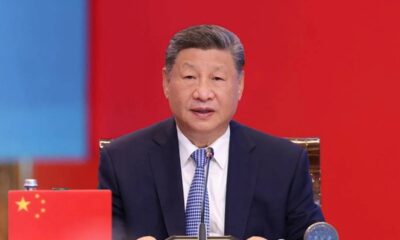
 Diplomacy2 weeks ago
Diplomacy2 weeks agoXi Jinping to miss BRICS summit in Rio for the first time
-
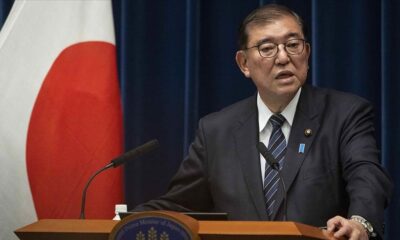
 Asia2 weeks ago
Asia2 weeks agoJapan’s prime minister skips NATO summit amid alliance strain
-
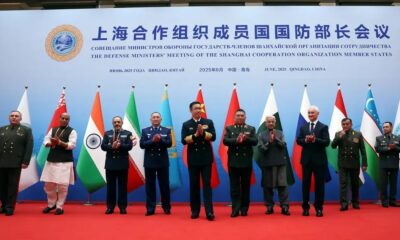
 Asia2 weeks ago
Asia2 weeks agoChina hosts SCO defense ministers on warship amid regional tensions
-

 Europe2 weeks ago
Europe2 weeks agoNew MI6 chief’s grandfather was a Nazi collaborator known as ‘The Butcher’
-

 Russia2 weeks ago
Russia2 weeks agoChina’s energy pivot: Power of Siberia 2 gains traction after Iran-Israel conflict
-

 Interview2 weeks ago
Interview2 weeks agoRetired Vice Admiral Kadir Sağdıç: ‘Closing Hormuz would benefit the US-Israel’


